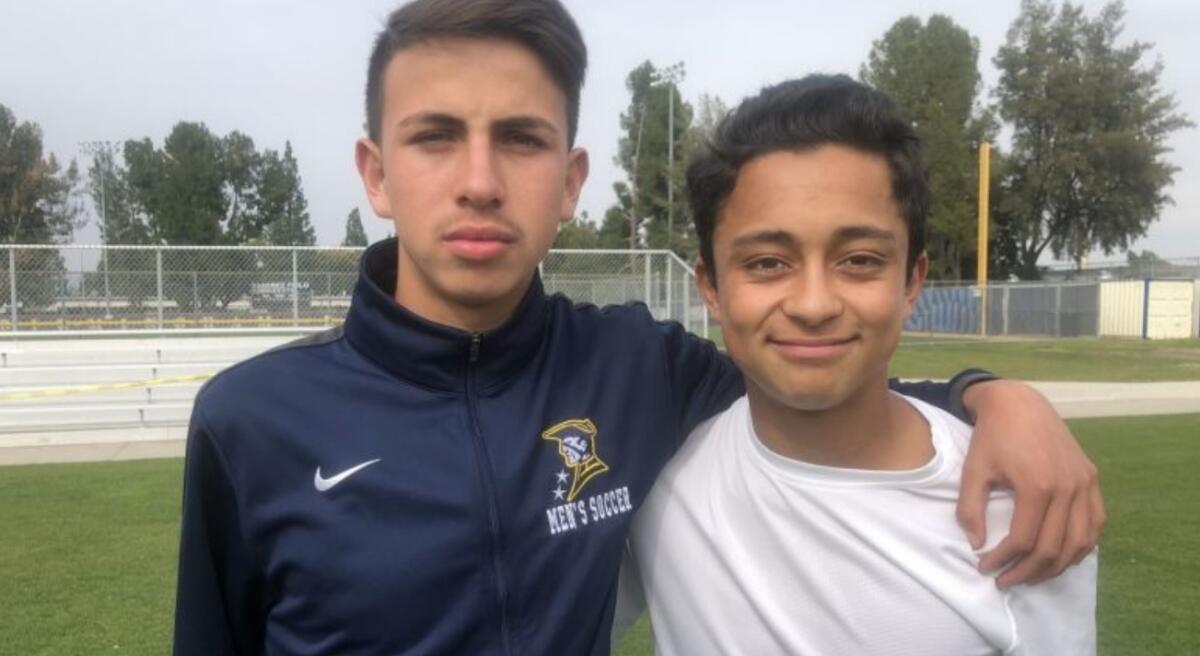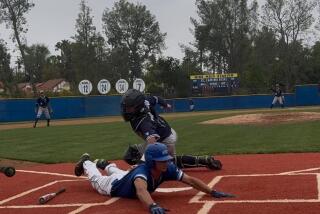Five members of Birmingham’s City Section championship team leave high school soccer

- Share via
Birmingham boys’ soccer coach E.B. Madha is not happy with U.S. Soccer. Five players who helped the Patriots win the City Section championship last season are not playing high school soccer this season. They chose to play in the U.S. Developmental Academy league for Real So Cal, a 30-year-old club program based in the San Fernando Valley that doesn’t accept players who do both.
“They think they’re going to be pros and travel,” Madha said.
Two of the players, juniors David Diaz and Anthony Miron, accounted for more than 30 goals last season for Birmingham.
Madha said the Academy league and U.S. Soccer are failing players because they are not developing enough young players as promised when the academy system was initiated.
“There is no player development in the academy,” he said. “If you had players since age 12 and have them with the best training and best of everything, they should continue to thrive in the Academy system and be the best at age 16. If that’s the case, why are you going out and recruiting players outside the system? It means your system is failing.”
Alberto Bru, the Real So Cal club director, said, “No. 1, the Academy league has been around for 12 years. Club players choosing not to play high school is not new. What Real So Cal is trying to do is give players the best soccer education they can.”
The team includes players from Taft, Cleveland and Alemany, all of whom chose to play in a 10-month year-round program instead of for their high school teams. There are plenty of others who choose not to play Academy, and it continues to be a yearly debate. U.S. Soccer chose to run its program in the middle of the high school soccer season, unlike other sports such as basketball and volleyball, forcing athletes and parents to make a choice.
“They created a 10-month program in order to improve soccer in this country,” Bru said. “Then we made a choice do we want our kids to be part of that?”
A group of players recently came back from a showcase in Florida where they performed in front of dozens of college coaches, and for which they missed school.
“The purpose of the Academy is to put the best against the best,” Bru said.
Players have made it to college soccer and the pros after participating in the Academy system and sticking with high school soccer. Everyone has a choice.
“We support high school soccer,” Bru said. “A few choose to be part of elite soccer.”
More to Read
Get our high school sports newsletter
Prep Rally is devoted to the SoCal high school sports experience, bringing you scores, stories and a behind-the-scenes look at what makes prep sports so popular.
You may occasionally receive promotional content from the Los Angeles Times.







